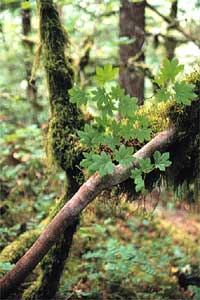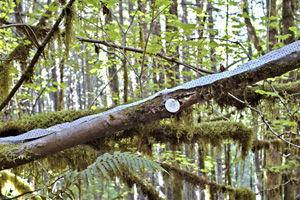Commercial Moss Harvest in the Pacific Northwest
JeriLynn Peck
 |
This page is on the nontimber forest product
|
 |
|
|
||
| In the context of PNW moss harvest, "moss" is usually a mixture of nonvascular mosses and liverworts that grow in large quantities on trees or shrubs (mostly epiphytes) in the subcanopy of forests 40+ years of age in western Oregon and Washington (and British Columbia). |
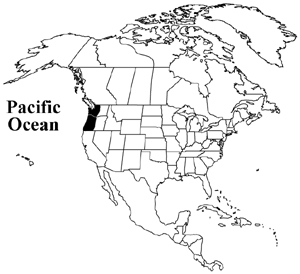 |
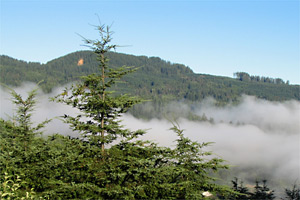 |
Most research on this topic has been conducted on the Hebo Ranger District of the Siuslaw National Forest in northwestern Oregon. Growing conditions for moss are ideal there; the coastal mountains receive abundant rainfall (>2500 mm/yr) 9 months of the year and regular fog (seen here!) during the summer drought. |
 |
As a result, moss is an abundant component of the forest ecosystem and is used for food and habitat by numerous organisms. |
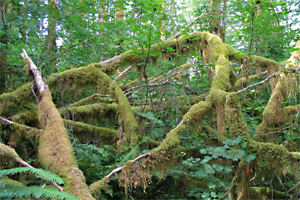 |

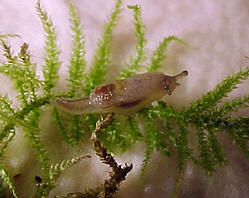

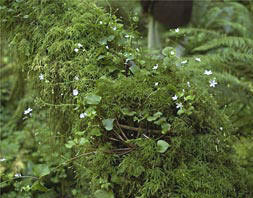
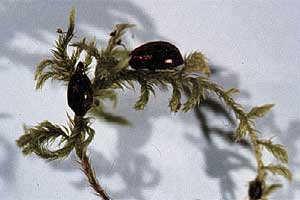
|
Sometimes, however, the moss is conspicuously missing. For many
decades, trainloads of moss were harvested from the woods as a nontimber forest
product, historically as a fruit packing material and more recently as a
horticultural decorative. Although this trade has nearly died out,
you will still find patches of vine maple shrubs or red alder boles with
gaps in their moss cover where the interwoven moss mats have been peeled
from their substrate.
|
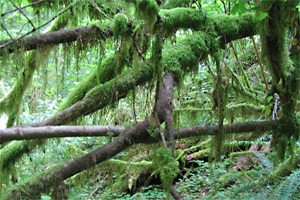 |
 |
Harvesters haul out the moss, lay it out to air dry, and sell it to one of the few remaining buying sheds in the region. These processors then compress 25# bales for the wholesale market. |
| Ultimately much of the moss is passed on in small quantities for sale in retail outlets such as nurseries and craft stores, but is also shipped wholesale to larger markets. PNW moss can end up in 44+ countries across the globe. |
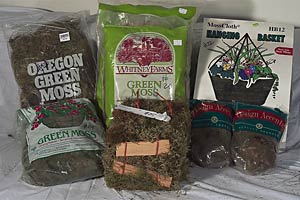 |
|
|
A good example of large volume moss use is this concourse at the Portland International Airport (PDX). Take a look around the bases of the potted plants you encounter in offices, convention centers, and malls. Odds are, that moss came from the PNW (or from the Appalachians, the #2 moss producing area of North America). |
| For many years, we didn't know much about moss harvest. In the mid-1990s, we began to work with harvesters, buyers, and mangers to find out what species were impacted, on what host trees and shrubs they grew, how much moss was out there and where, and what impact this harvest might have on richness, abundance, and species composition. |
 |
 |
We monitored harvesting activity, simulated harvest, and recorded what came off and what grew back. |
| We found out that the harvesters were right; small amounts can be harvested over long periods of time in a sustainable fashion. |
 |
|
|
But, we also found that the local areas impacted by harvest were really impacted! These stems show how variable recovery can be: some were 100% covered after 10 years and others remained nearly bare. |
|
If you are interested in this area, visit this literature page and consider contacting the following individuals: PNW moss harvest:
JeriLynn Peck
(Penn State),
Related topics on how humans interact with mosses in their environment:
Living With Mosses
(Oregon State University class website)
|
|
